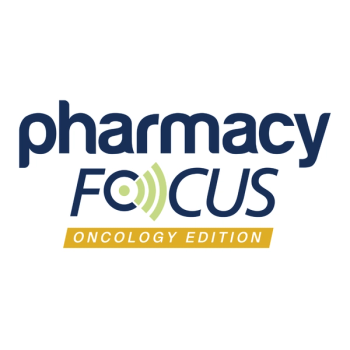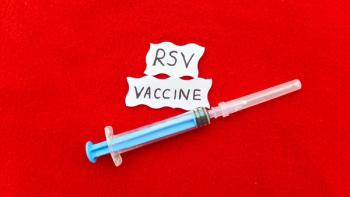
GLP-1 Receptor Agonists Show Promise Across Alcohol, Opioid, and Tobacco Use Disorders
Key Takeaways
- GLP-1 receptor agonists may treat alcohol and substance use disorders by modulating addiction-related neurobiological pathways, reducing cravings and substance use.
- Current ASUD treatments are insufficient, with many affected individuals not receiving adequate care, emphasizing the need for new therapeutic options.
GLP-1 receptor agonists show potential as innovative treatments for alcohol and substance use disorders, addressing critical public health needs.
Glucagon-like peptide-1 receptor agonists (GLP-1s), which are commonly used to treat diabetes and obesity, could also be a reliable therapy for alcohol and other substance use disorders, according to study findings published by investigators in the Journal of the Endocrine Society. The study authors noted that the medications show promise in improving alcohol use disorder (AUD), opioid use disorder (OUD), and tobacco use disorder by modulating neurobiological pathways underlying addictive behaviors, potentially reducing substance craving.1,2
“Early research in both animals and humans suggests that these treatments may help reduce alcohol and other substance use,” Lorenzo Leggio, MD, PhD, of the National Institute on Drug Abuse (NIDA) and the National Institute on Alcohol Abuse and Alcoholism (NIAAA), both part of the National Institutes of Health (NIH) in Bethesda, Maryland, and lead study author, said in a news release. “Some small clinical trials have also shown encouraging results.”2
What Treatment Options Are Available for Alcohol and Other Substance Use Disorders?
Currently, treatment options for alcohol and other substance use disorders (ASUDs) are limited, but they are treatable. The severity of the disorders is categorized as physical dependence, risky use, social problems, and impaired control that could lead to several medical, psychological, and socioeconomic consequences.1
“Current treatments for [alcohol and other substance use disorders] fall short of addressing public health needs,” the authors said in the study.2
Data from the 2023 National Survey on Drug Use and Health found that nearly 46.3 million adults 18 years and older and around 2.2 million adolescents aged 12 to 17 years have ASUDs, such as alcohol, cannabis, prescription psychotherapeutics, and opioids. Specifically, data from 2023 found that 28.1 million adults 18 years and older experienced AUD, and 757,000 adolescents aged 12 to 17 years also had AUD. In 2023, fewer than 25% of individuals with ASUDs received treatment, and under 2% received medication for AUD. Additionally, many patients who visit endocrinologists or other clinicians may not realize their symptoms are linked to underlying ASUD, emphasizing the need for health care providers to recognize the impact of ASUDs and highlighting the critical need for further treatment options.1,2
Can GLP-1s Improve Alcohol and Other Substance Use Disorders?
Previous research from neuroscience, neuroimaging, and clinical studies shows that ASUDs and obesity share certain biological and behavioral mechanisms, leading to questions about whether GLP-1s can provide benefits for patients with ASUDs.1
“Pathways implicated in addiction also contribute to pathological overeating and obesity,” the authors said in the study.1,2
Regarding AUD, a randomized controlled clinical trial assessed the use of exenatide (Byetta; Amylin and Eli Lilly & Co), which showed no overall effect on alcohol intake, but a subgroup with comorbid obesity had reduced consumption, while low-dose semaglutide (Ozempic; Novo Nordisk) decreased alcohol self-administration, drinking frequency, and cravings.1,2
In OUD, animal studies found that GLP-1s lowered self-administration of opioids, including heroin, fentanyl, and oxycodone, while reducing relapse-like behavior. Further preclinical results for tobacco use disorders found that GLP-1s reduce nicotine use and relapse, with early human trials suggesting they may help lower daily cigarette consumption and limit post-cessation weight gain.1,2
“This research is very important because alcohol and drug addiction are major causes of illness and death, yet there are still only a few effective treatment options,” Leggio said in the news release. “Finding new and better treatments is critically important to help people live healthier lives.”2
REFERENCES
1. Nirupam M Srinivasan, Mehdi Farokhnia, Lisa A Farinelli, Anna Ferrulli, Lorenzo Leggio, GLP-1 Therapeutics and Their Emerging Role in Alcohol and Substance Use Disorders: An Endocrinology Primer, Journal of the Endocrine Society, Volume 9, Issue 11, November 2025, bvaf141, https://doi.org/10.1210/jendso/bvaf141
2. GLP-1s show promise in treating alcohol and drug addiction. EurekAlert! News release. October 9, 2025. Accessed October 14, 2025. https://www.eurekalert.org/news-releases/1100889
Newsletter
Stay informed on drug updates, treatment guidelines, and pharmacy practice trends—subscribe to Pharmacy Times for weekly clinical insights.




















































































































































































































